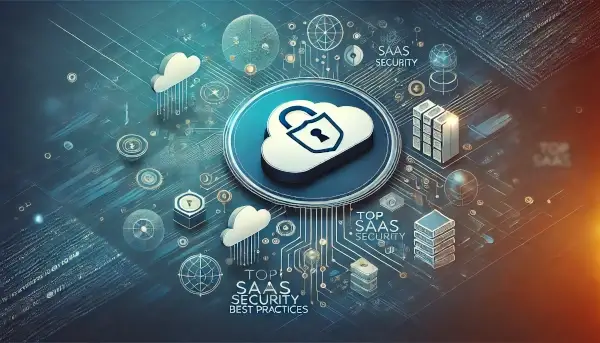
Are you running your business on SaaS applications? Then, you'll know that the convenience and flexibility that come with it are unbeatable. However, there's an area you need to pay special attention to so you can ensure your business success. Running a business reliant on cloud-based solutions means SaaS security is more important than ever.
Table of Contents:
What is SaaS Security?
SaaS Security Best Practices You Must Follow
1. Leverage Enhanced Authentication
2. User Access Management
3. Vendor Security Assessment
4. Data Backup and Recovery
5. Monitoring and Logging
6. Regular Security Updates
7. Prioritize Scalability & Reliability
8. Maintain SaaS Visibility
9. Governance and Incident Management
10. Data Encryption
Conclusion
What exactly is SaaS security?
In this article, we'll break down the concept and share with you the top 10 best practices to follow so you can protect your digital sphere.
What is SaaS Security?
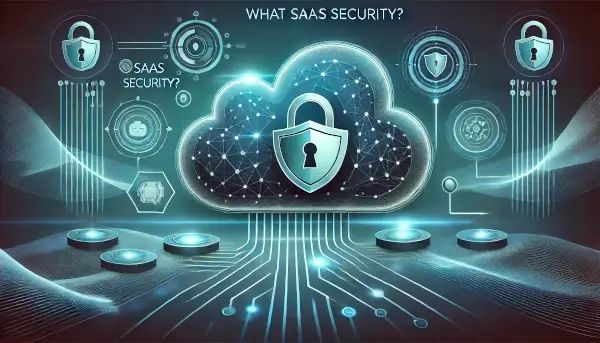
Software-as-a-Service (SaaS) is a popular model in which users access software applications via the Internet without the need for local installation or maintenance. SaaS security is the process of securing data in subscription-based apps hosted on cloud-based platforms.
Common SaaS examples include platforms such as WebSitePulse for IT infrastructure monitoring, Salesforce for customer relationship management, Slack for team communication, and PaystubHero for automated payroll and paystub generation.
In SaaS, security is a shared responsibility between the provider and the user. The SaaS provider secures the underlying infrastructure and platform through measures like firewalls and updates. However, users are responsible for their own data security.
SaaS security concerns are critical due to the vulnerabilities and data breaches that can cost organizations significantly. These concerns include:
- Misconfigurations
- Cross-site scripting (XSS) attacks
- Inadequate monitoring and logging
- Insider threats
- Compliance issues with regulations like GDPR and HIPAA
- Identity theft risks associated with online payment methods
Addressing these concerns requires the diligent application of security measures. Cyber threats lurk around every corner. In a 2023 survey, 43% of respondents mentioned identity and access governance as their main security concern while adopting SaaS.
SaaS Security Best Practices You Must Follow
That said, here are the top essential SaaS practices you should implement to ensure the integrity and confidentiality of your data in the cloud. Whether you're using Trello, Canva, or ClickFunnels alternatives, make sure you implement these to ensure your data is protected:
1. Leverage Enhanced Authentication
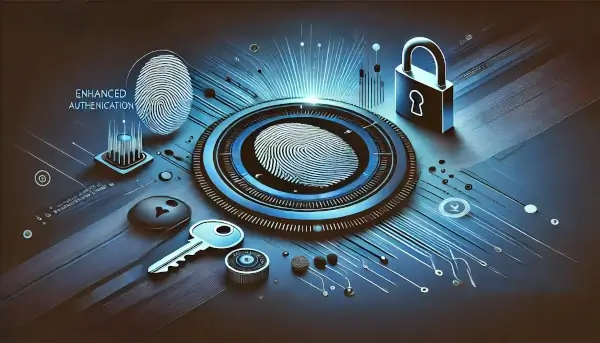
One way to fortify your application security is to embrace enhanced authentication methods that add an extra layer of protection against unauthorized user access. Multi-factor authentication (MFA) is a prime example of enhanced authentication. It requires users to provide multiple verification forms before accessing their accounts.
Assume you're a project manager using a cloud-based tool like Jira to ensure project success. By enabling MFA, even if a hacker manages to obtain your password, you still have a second layer of defense to rely on. The hacker would still need to provide a second form of verification. This could be a temporary code sent to your mobile device or email address to gain access to the account.
Ensure you choose good passwords to enhance security further. Strong passwords are complex, containing a mix of letters, numbers, and symbols and avoiding common words or phrases.
Additionally, you can use password managers. These tools eliminate the need for you to remember multiple passwords. A password manager can streamline your security protocols by offering secure storage and management of passwords, thus vastly reducing the risk of breaches due to weak or forgotten credentials. At the same time, they can generate strong, unique passwords for each of your accounts, reducing the risk of password-related security breaches.
2. User Access Management
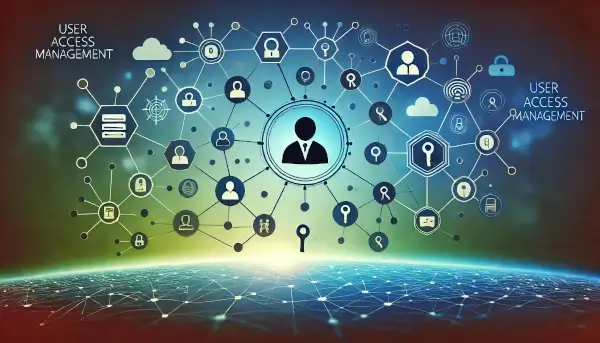
User Access Management (UAM) is a critical component of cybersecurity, especially in environments where sensitive data is accessible through various systems and applications. It involves controlling and managing who has access to what resources within an organization, ensuring that only authorized individuals can view, use, or modify specific data or systems. By enforcing stringent access controls, organizations can minimize the risk of data breaches, insider threats, and unauthorized access to sensitive information.
One of the fundamental principles of UAM is the Principle of Least Privilege (PoLP), which dictates that users should only be granted the minimum level of access necessary to perform their job functions. This reduces the potential attack surface by limiting access to critical systems and data. Additionally, UAM strategies often incorporate MFA to add an extra layer of security.
Combining these practices with regular audits, role-based access controls (RBAC), and automated provisioning and de-provisioning processes, organizations can maintain a robust access management framework that adapts to changes in roles, responsibilities, and the threat landscape.
3. Vendor Security Assessment
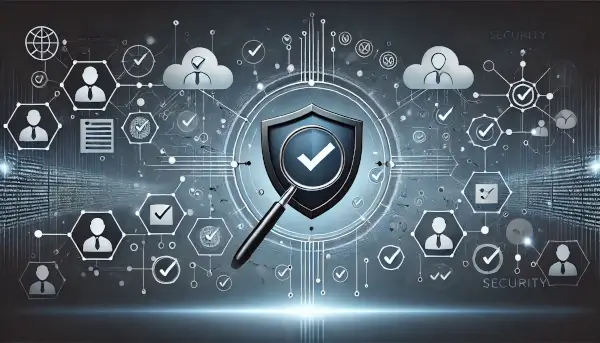
Vendor Security Assessment is a vital practice for organizations that rely on third-party vendors, especially when these vendors have access to sensitive data or critical systems.
As businesses increasingly adopt cloud-based services and outsourced solutions, their vendors' security posture becomes an integral part of their overall cybersecurity strategy. A vendor security assessment involves evaluating a vendor's security policies, practices and controls to ensure they meet the organization's security requirements and industry standards.
Depending on the industry and regulatory environment, this assessment typically includes reviewing the vendor's compliance with recognized security frameworks such as ISO 27001, SOC 2, or GDPR.
Organizations should also assess the vendor's incident response capabilities, data protection measures, and access control effectiveness.
Establishing clear security-related Service Level Agreements (SLAs) can help define the vendor's responsibilities in case of a security breach and ensure ongoing monitoring and reassessment.
Regular vendor security assessments help organizations identify potential risks associated with third-party services, allowing them to mitigate these risks before they lead to security incidents. By taking a thorough and proactive approach to vendor security assessment, organizations can protect their data and maintain trust with their stakeholders.
4. Data Backup and Recovery
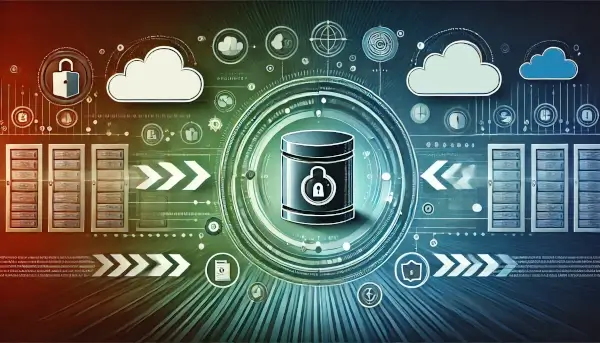
Data Backup and Recovery are fundamental components of any robust cybersecurity and business continuity strategy. In the event of data loss due to cyberattacks, human error, hardware failure, or natural disasters, having reliable data backups ensures that an organization can quickly restore its operations and minimize downtime.
Effective backup strategies involve regularly creating copies of critical data and storing them in secure, geographically diverse locations to protect against localized incidents. These backups should be encrypted, both in transit and at rest, to prevent unauthorized access and ensure data integrity.
Recovery processes are equally important and should be clearly defined and regularly tested to ensure backups can be restored efficiently. A well-documented disaster recovery plan outlines the steps necessary to restore data and resume normal operations, including prioritizing the restoration of critical systems and data.
Regularly testing the recovery process is crucial. It helps identify potential issues, such as corrupted backups or inadequate recovery times and allows organizations to fine-tune their procedures.
Organizations can safeguard their information assets by prioritizing data backup and recovery and maintaining business continuity in the face of unforeseen events.
5. Monitoring and Logging

Monitoring and Logging are essential practices in maintaining the security and operational integrity of an organization's IT environment. Continuous monitoring involves the real-time observation of networks, systems, and applications to detect and respond to potential security threats or performance issues. This proactive approach enables organizations to quickly identify unusual or unauthorized activities, such as unexpected login attempts, data access patterns, or system changes, allowing for timely intervention before these activities escalate into significant security incidents.
Conversely, logging refers to the systematic recording of events and activities across an organization's IT infrastructure. Logs capture detailed information about user actions, system performance, network traffic, and application processes, providing a comprehensive audit trail that can be invaluable during security investigations or compliance audits.
Effective logging practices involve collecting and storing these logs securely and ensuring that they are retained for an appropriate period and regularly reviewed.
Together, monitoring and logging form a critical layer of defense, helping organizations maintain visibility into their operations, detect anomalies, and meet regulatory requirements for data security and privacy.
6. Regular Security Updates
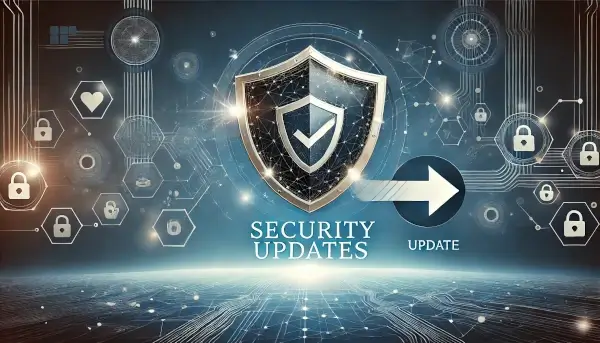
Regular security updates are fundamental to maintaining the integrity and safety of an organization's IT infrastructure. These updates typically include patches that fix software, firmware, and operating system vulnerabilities that malicious actors could otherwise exploit.
By keeping systems up-to-date, organizations can close security gaps that cybercriminals might use to gain unauthorized access, steal data, or disrupt operations.
Regularly applying these updates is particularly important given the rapidly evolving threat landscape, where new vulnerabilities are discovered frequently and quickly exploited by attackers.
Beyond simply applying patches, regular security updates also involve updating configurations, security tools, and policies to reflect the latest best practices and threat intelligence. This might include updating firewall rules, enhancing encryption protocols, or fine-tuning intrusion detection systems.
It is essential to have a structured process in place for testing and deploying these updates to ensure they do not inadvertently disrupt business operations. Automated tools can help manage and streamline the update process, ensuring that critical patches are applied promptly.
By prioritizing regular security updates, organizations can significantly reduce their risk of being victimized by known vulnerabilities and ensure that their defenses are as robust as possible against emerging threats.
7. Prioritize Scalability & Reliability
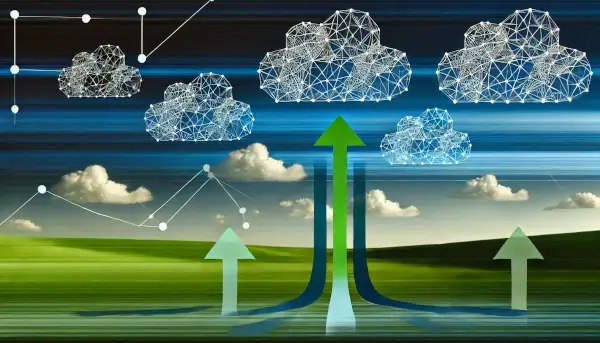
In SaaS, security, scalability, and reliability are crucial for maintaining a solid digital foundation. As your business grows and data volumes increase, a scalable SaaS infrastructure ensures:
- Data security remains intact: Even during traffic spikes, encryption algorithms and access controls can efficiently handle the load, minimizing security issues.
- No unauthorized access: Scalable security measures can adapt to accommodate new users and permissions without compromising existing access limitations.
- Resilience against attacks: A robust infrastructure can withstand denial-of-service attacks or other attempts to overwhelm the system better, protecting your sensitive data.
Say your e-commerce platform is experiencing rapid growth. This expansion requires flexible and reliable SaaS solutions. Without a scalable SaaS solution, your website could buckle under the pressure, leading to downtime and potential revenue losses. With this strategic consideration, you can maintain seamless operations, safeguard against potential security vulnerabilities, and effectively support your growing customer base.
To maintain a safe and scalable SaaS environment, opt for tools that can grow with your business needs without significant changes. This approach can help you avoid security risks like data leaks that can come with infrastructure overhaul. Choose systems that can integrate new features seamlessly as your demands evolve.
You can check the reliability of tools for your SaaS environment in online reviews and forums. Also, check whether your providers respond quickly when users raise security issues.
8. Maintain SaaS Visibility
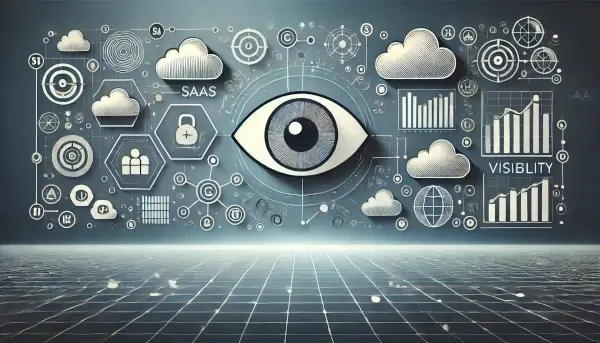
Maintaining visibility into your SaaS environment is essential for detecting and mitigating security threats before they escalate into major incidents.
Monitoring user activities and access logs allows you to quickly identify any suspicious behavior, such as unauthorized access attempts or unusual data transfers.
With clear visibility, you can track compliance with security policies and regulations, ensuring that your organization remains in line with industry standards and data protection laws. Additionally, visibility enables you to proactively manage risks and respond promptly to security incidents, mitigating their impact on your business operations.
Let's say you use a cloud-based collaboration platform like Microsoft Teams to coordinate projects with other remote team members. If you monitor user activities and access logs, you can quickly identify any suspicious behavior, such as unauthorized file downloads or login attempts from unfamiliar locations, and take the necessary steps to counter it.
Furthermore, regular checkups enable you to track compliance with security policies and regulations, whether GDPR in Europe or HIPAA in the United States. If your organization complies with these industry standards and data protection laws, it will avoid costly penalties for violations.
9. Governance and Incident Management
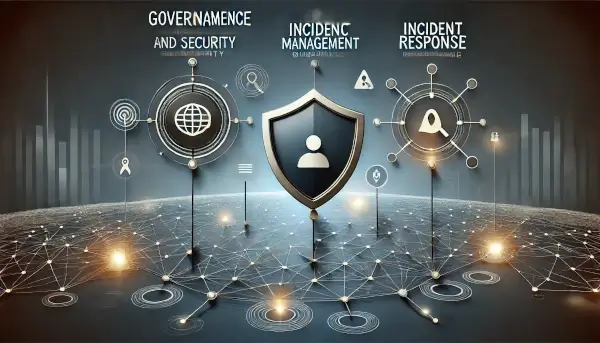
In cloud software security, establishing governance policies and incident management procedures is crucial for effectively managing and mitigating security risks.
Governance provides the framework for defining roles, responsibilities, and access controls within your organization's SaaS environment. Incident management ensures a swift and coordinated response to security incidents, minimizing their impact on business operations.
Say you're the IT administrator for a growing tech startup that utilizes a suite of SaaS tools, including Google Workspace for email and collaboration. Establishing clear governance policies is essential, as multiple users access sensitive company data. These policies, such as access controls and data retention guidelines, help maintain data integrity and security. That's not to say they're foolproof. Despite your best efforts, security incidents can still occur. These incidents may include phishing attacks targeting employee credentials or data breaches resulting from misconfigured cloud storage buckets.
This is where incident management comes in. A well-defined incident management plan is critical for minimizing the impact and restoring normal operations.
Effective incident management involves a coordinated response from cross-functional teams, including IT, security, legal, and communication stakeholders. From containing the incident to conducting forensic analysis and communicating with affected parties, each step must be carefully orchestrated to ensure a swift and effective resolution.
Additionally, emerging technologies like generative AI can enhance incident management. You can use ChatGPT for hacking to identify points of vulnerability in your SaaS environment, enabling proactive threat detection and the immediate activation of mitigation strategies.
10. Data Encryption
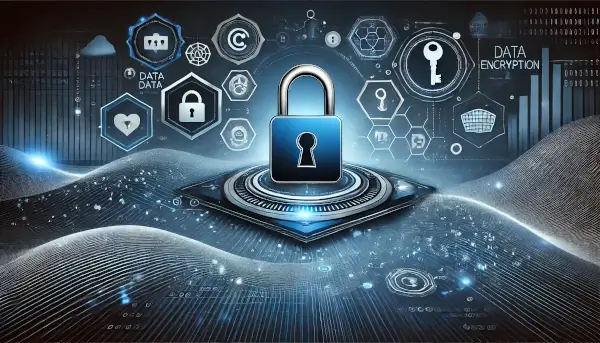
Data encryption is another critical component of SaaS security. Data encryption transforms sensitive information into an indecipherable code that only authorized parties can decrypt. Implementing encryption algorithms such as AES (Advanced Encryption Standard) ensures that even if attackers gain access to the data, they cannot decipher it without the encryption key.
It provides an extra layer of protection for your business data. By encrypting information in transit and at rest, you safeguard your data from unauthorized access and mitigate the risk of data breaches.
Additionally, encryption extends beyond the confines of your organization's infrastructure to encompass data shared with third-party vendors and partners.
So, if you're sharing confidential documents with a legal firm or collaborating on sensitive projects with external contractors, encryption ensures that your data remains protected throughout its lifecycle.
Here are some actionable tips to enhance data encryption:
- Use encryption tools provided by your SaaS provider. Many SaaS platforms offer built-in encryption features for securing data stored on their servers. Take advantage of these tools to encrypt sensitive files and communications.
- Implement end-to-end encryption for communication channels. When sharing sensitive information over communication channels such as email or messaging apps, use end-to-end encryption to ensure that only the intended recipients can access the data.
- Regularly update encryption keys. Periodically update encryption keys to maintain security and prevent unauthorized access to encrypted data. This security practice reduces the risk of brute-force attacks and ensures that compromised keys don't put data at risk.
Data encryption is critical in many industries, especially for a healthcare provider using a cloud-based Electronic Health Record (EHR) system to store patient medical records. With strict regulations like HIPAA governing the protection of patient data, ensuring that sensitive information is encrypted is simply a must.
Conclusion
Keeping your data secure is an ongoing effort. It requires continuous monitoring, adaptation, and collaboration between service providers and users. By implementing these best practices outlined in this article, you can strengthen your SaaS security and mitigate the risks associated with cloud-based applications.
Armed with the knowledge and insights gained from this article, go forth and fortify your digital space.
Your business deserves nothing less than the highest level of protection. Remember, your data's security is in your hands–take action now to safeguard your digital assets and protect your business from potential threats.


 Copyright 2000-2025, WebSitePulse. All rights reserved.
Copyright 2000-2025, WebSitePulse. All rights reserved.